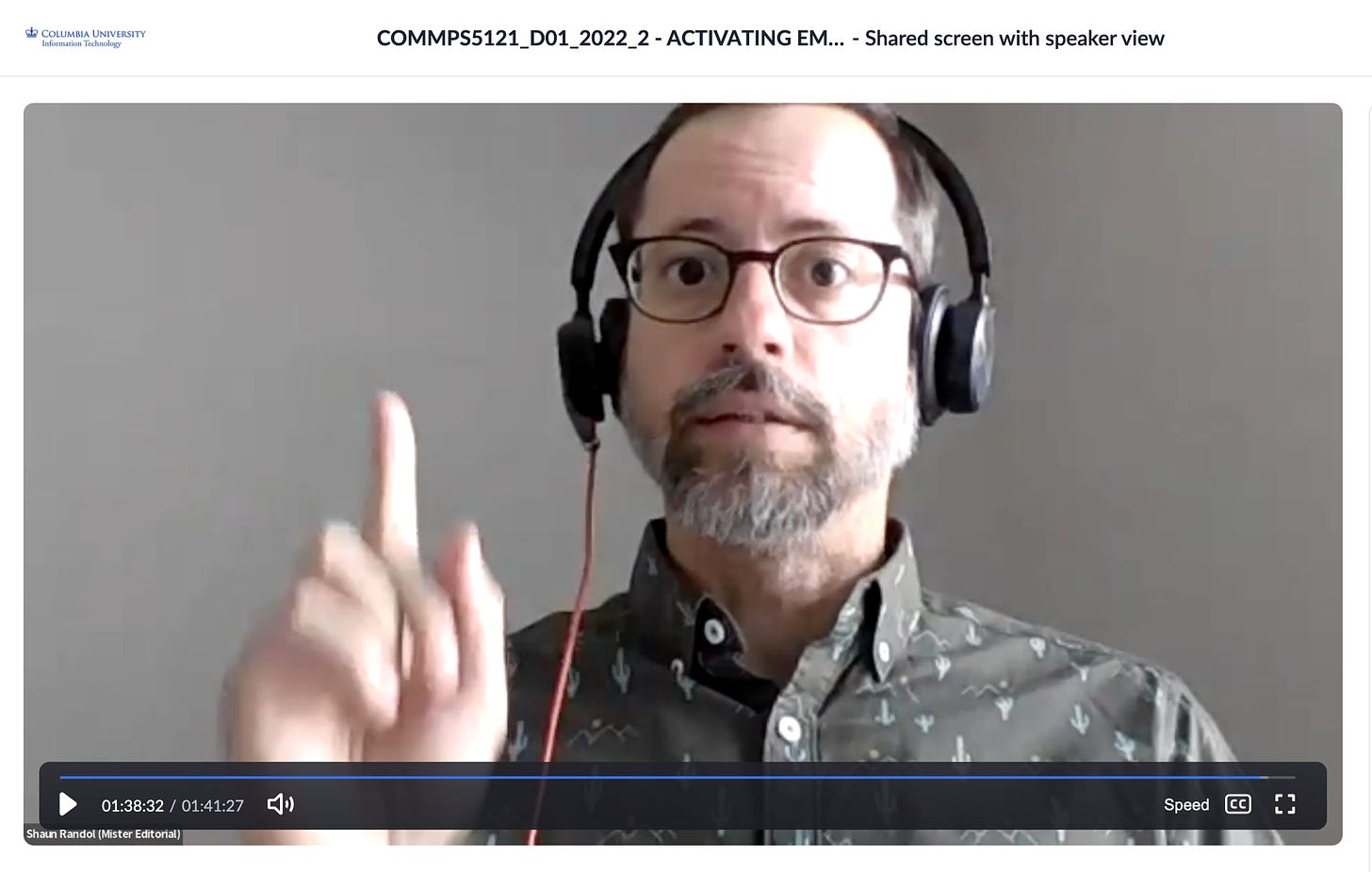Thoughts on Editorial Strategy, Multimedia, and a Multichannel Platform
The authority on mixternal communications
On July 27 I was invited by Ethan McCarty—founder and CEO of Integral, teacher, mentor, friend—to give a guest lecture to students in the MS in Strategic Communications program at Columbia University. It was my third time doing so, but until now I hadn’t shared notes from such a privileged appearance.
My “Six Steps to Create an Editorial Strategy” is on the syllabus and normally I talk about that, but this year I was asked to present a week later on the module about multimedia in employee comms. So I combined the topics.
Here are my thoughts.
Why Have an Editorial Strategy?
Consider a personal experience. I have a few hobbies and interests where I try to consume all the information I can, one of which is in finance—specifically value investing. I stay up to date on this topic in many ways:
Online news - WSJ, Bloomberg, CNBC, FT
Newsletters - Charles Schwab, IQ Trends (print and digital), CNBC, and InvestTech (print)
Podcasts - Choiceology, Masters in Business, Prof G
Books - Too many to list
YouTube - Especially lectures and interviews
Think about your own interests outside of work. Formula 1, cooking Korean food, gardening, entrepreneurship, WWII history, furniture restoration. How do you stay on top of these subjects? Chances are you’re subscribed to, paying for, or following several examples of what I shared above, as well as getting lost down rabbit holes on Instagram, Reddit, and TikTok and attending live events and experiences.
Very likely you’re following your favorite topic five or six different ways.
The reason you’re following your interest area in so many different ways is that the channels satisfy needs that vary by circumstance. For example, while driving to work it’s not a good (safe) idea to also be watching Netflix’s Drive to Survive series to get your Formula 1 fix, but listening to the F1 Nation podcast can get the job done.
Similarly, while waiting for the elevator that gets you to your cubicle, it’s impossible to review the billboards outside your building, but you can scroll through your Instagram feed to get your fashion trends fix.
Substitute your hobby for taking an interest in the success of your company. Just because you’re thinking about your company doesn’t mean that you stop being a multichannel consumer who sits in one place all day long.
And chances are that in addition to channels you’re already familiar with in your personal life—email, social media, billboards—you’ve got one or two new channels at your fingertips: chat platforms like Slack, digital signage in the corporate office, an intranet, and Zoom to name just four.
An editorial strategy brings coherence, quality, and consistency to the multichannel, multimedia experience of learning about your company, coworkers, and industry.
What Does an Editorial Strategy Look Like?
High-functioning internal communications groups operate with an editorial plan for reasons practical and strategic.
Practically there must be a way to organize the vast amounts of content the team curates, creates, publishes, and distributes.
Strategically the team needs to ensure that its work supports overarching company goals.
An editorial strategy is a plan for how your team manages, uses, and measures content, contributors, channels, analytics, and feedback to support the company’s objectives.
Implemented correctly, the strategy:
reinforces your team’s role within the company
creates changes in behavior and mindset in ways that support company goals
builds trust among employees (and internal business partners) in your workplace
Six components make up a sound editorial strategy:
Keep reading with a 7-day free trial
Subscribe to Mister Editorial to keep reading this post and get 7 days of free access to the full post archives.



